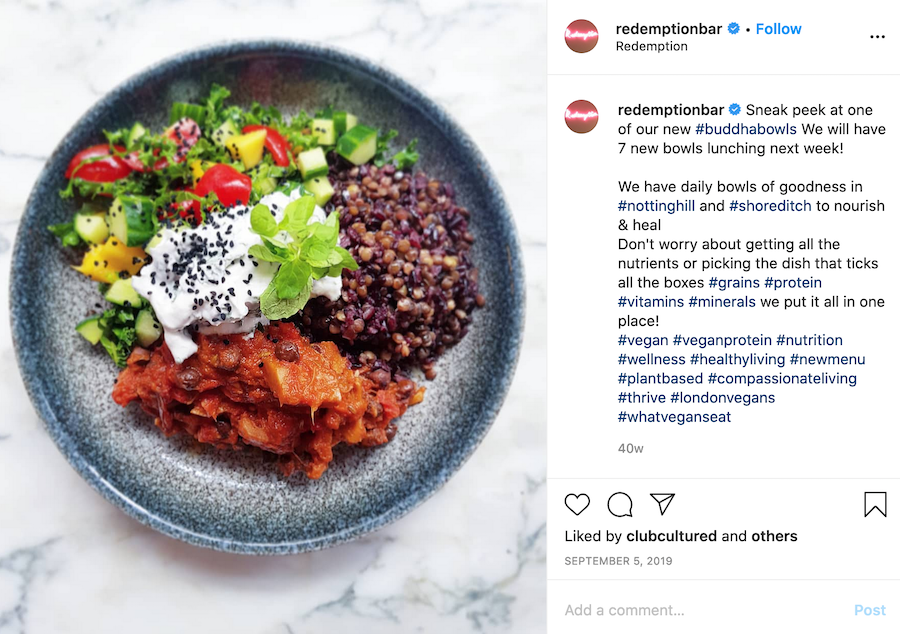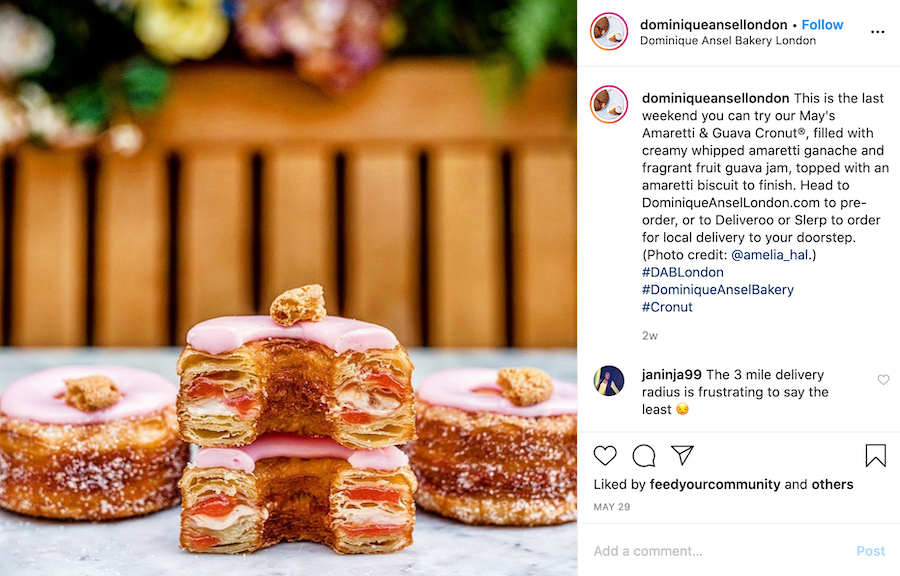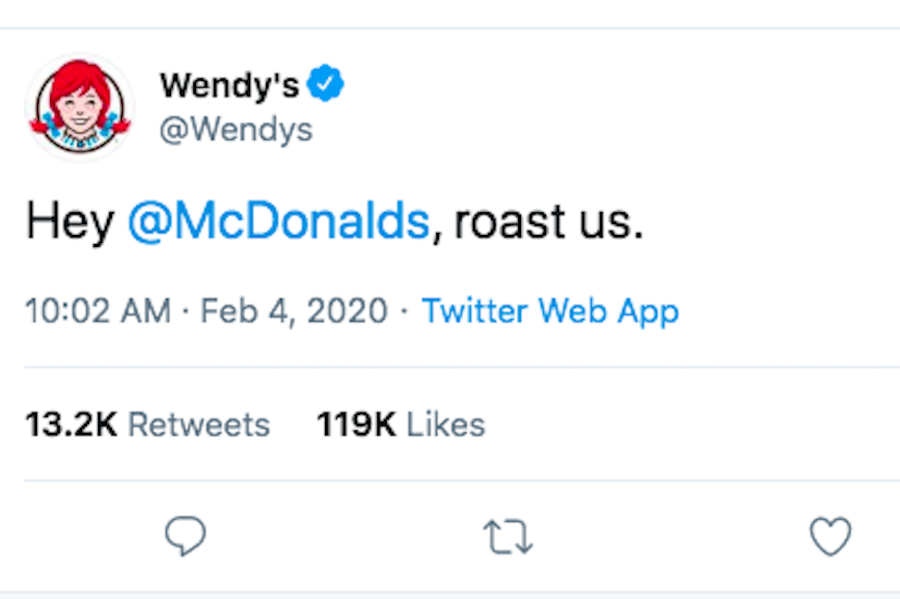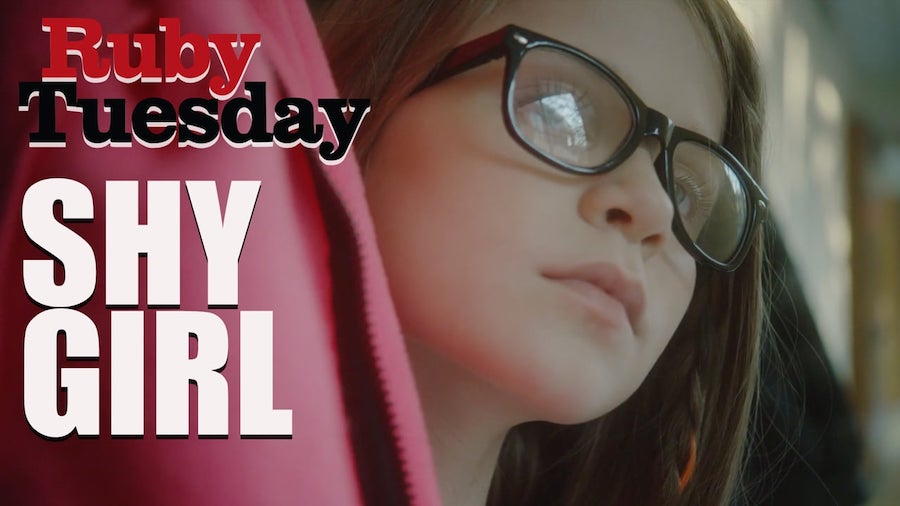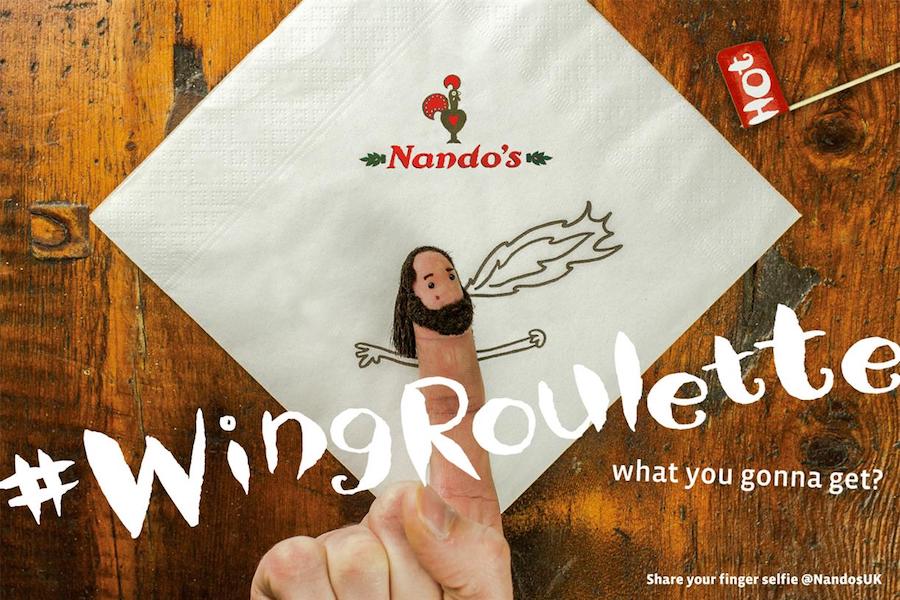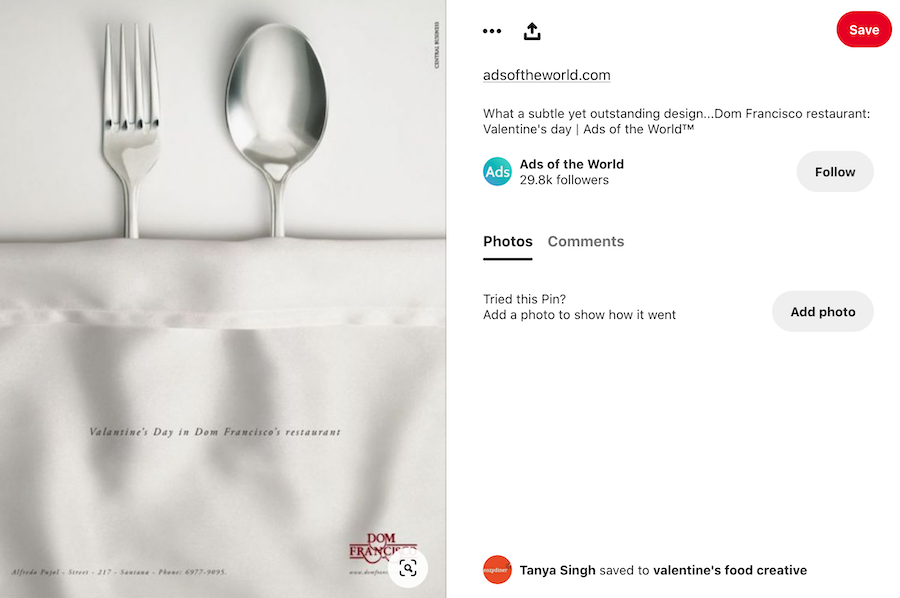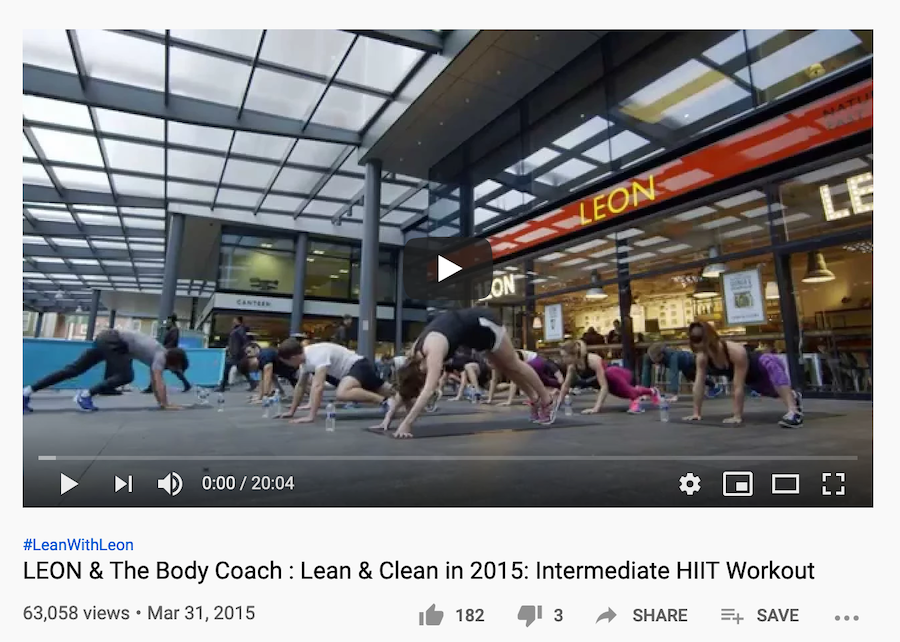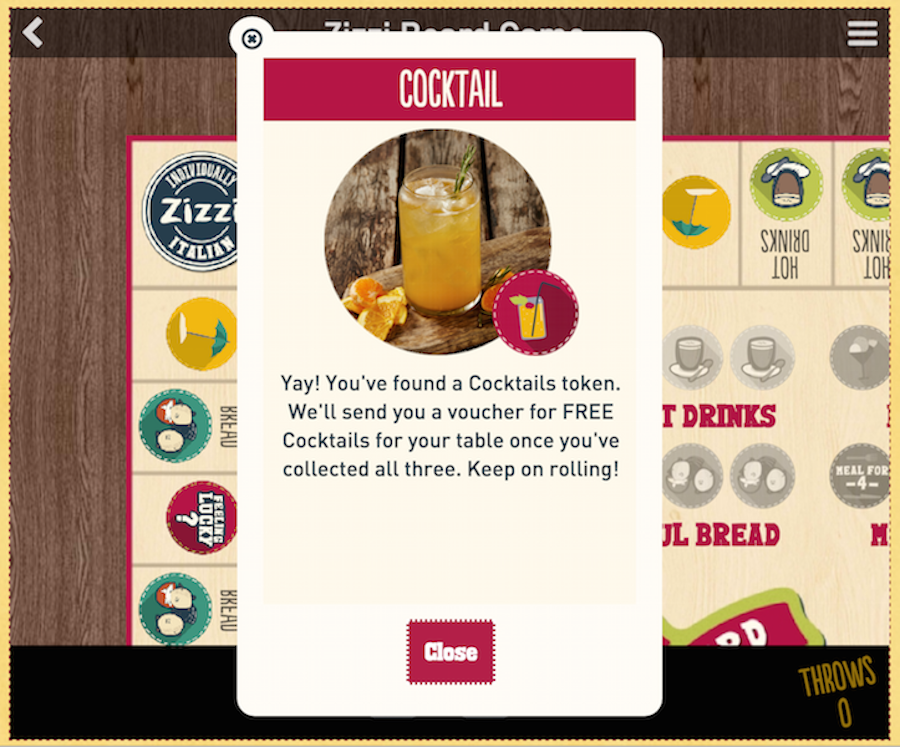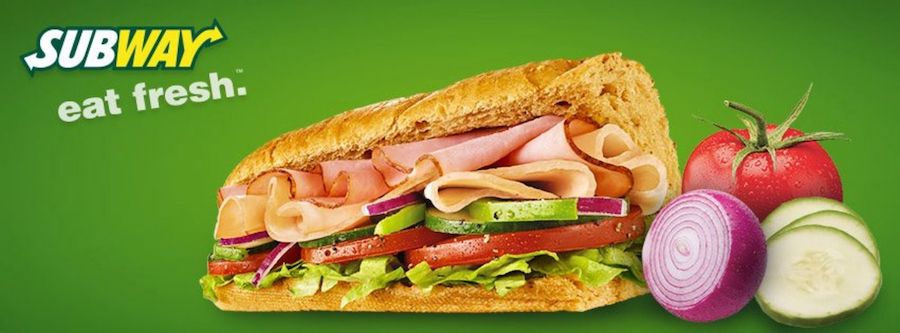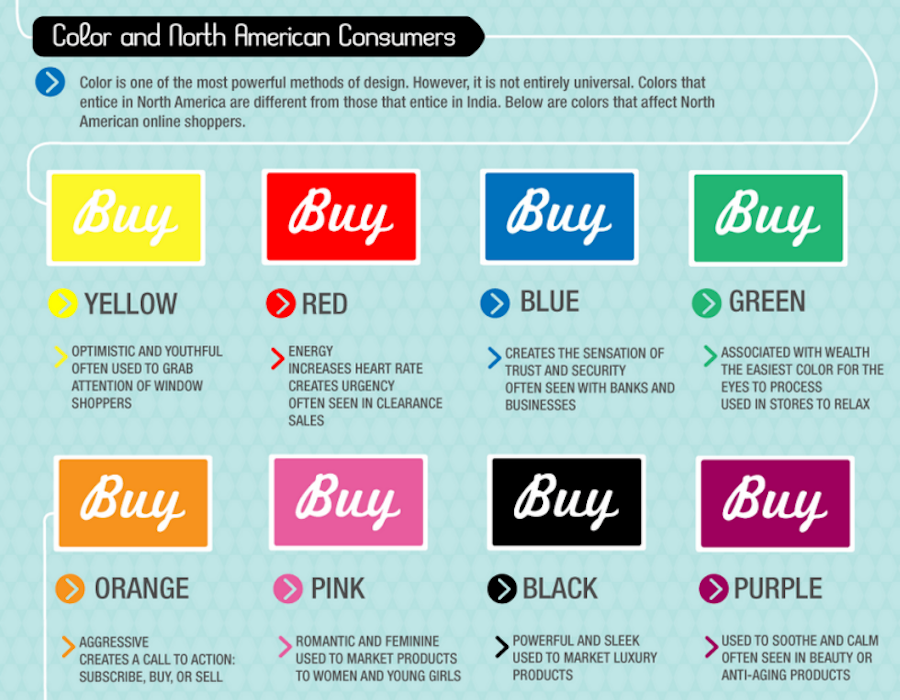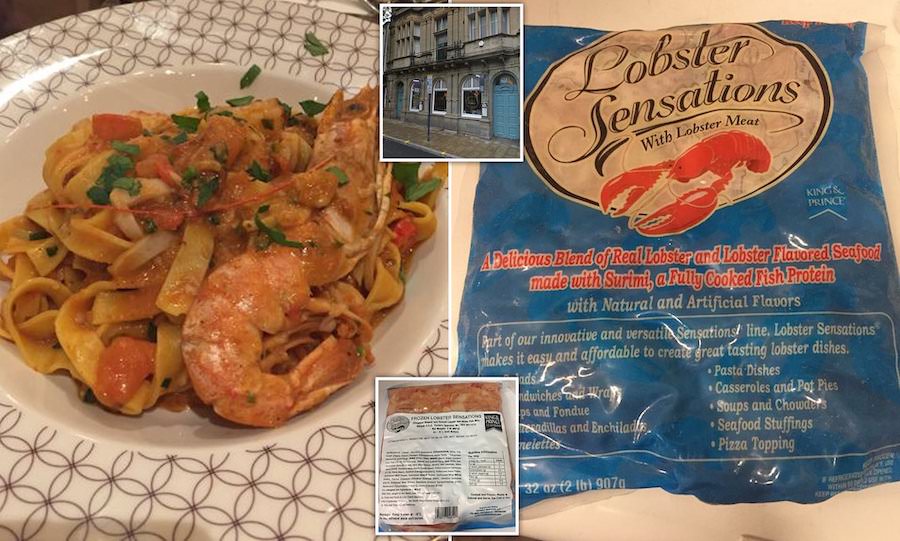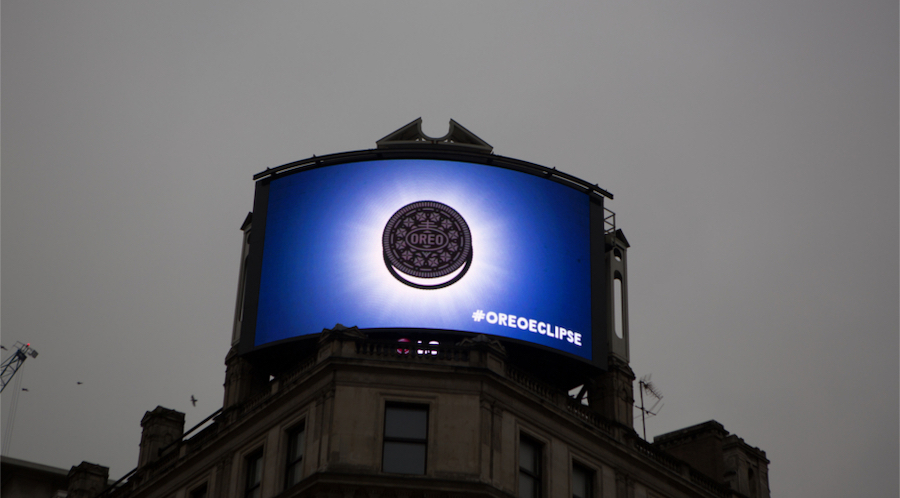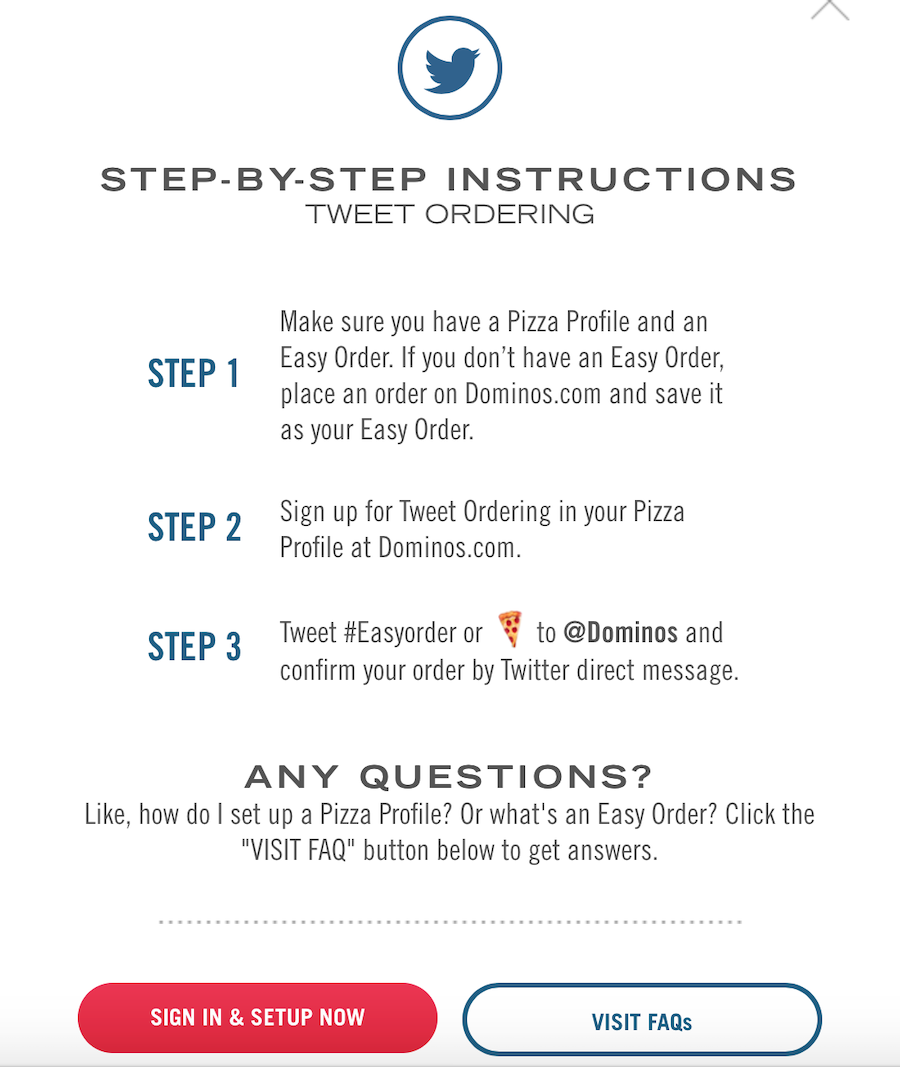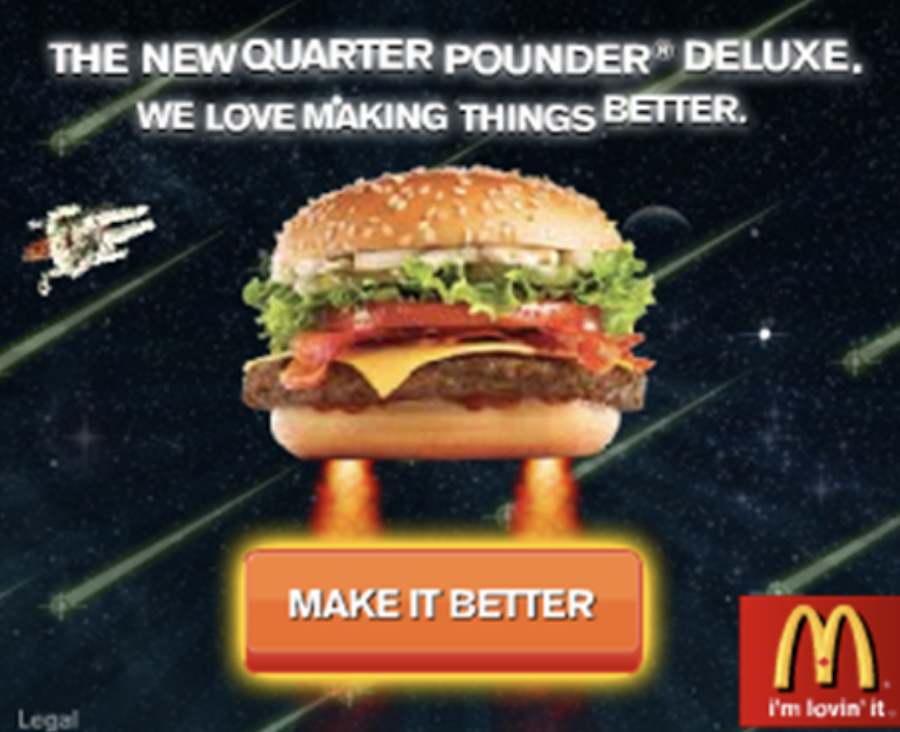Restaurant Advertisements: 20 Tips with Creative Examples
Restaurant advertisements only work if you first capture people’s attention and secondly resonate with them so you can persuade them to visit.
Restaurant advertisements are everywhere, from tube stations to mobile apps, but what separates a good one from a bad one?
Or more accurately, effective restaurant advertisements compared to ineffective ones?
This article will explore restaurant advertisements best practices, with examples, to show you how good restaurants are doing it.
Here’s what we’ll cover. You can tap on the link to jump to that section:
1. Features tell, benefits sell
2. Go big with your descriptions
3. Use scarcity to your advantage
4. Throw special events
5. Create videos for YouTube and TV
6. Twitter restaurant advertisements
7. Snapchat restaurant advertisements
8. Get hashtags trending
9. Become an amazing storyteller
10. Take advantage of user-generated content
11. Use humour
12. Learn how to implement influencer marketing
13. Use gamification
14. Ping targeted ads
15. Get your colours right
16. Don’t mis-lead your customers
17. Be aware of food trends
18. Use platforms that suit your restaurant
19. Take advantage of strong CTAs
20. Only use high-quality content
1. Features tell, benefits sell
When creating your restaurant advertisements always try and place the emphasis on the benefits and not the features.
Simply describing the features of your offering won’t persuade anyone to visit.
But by hammering down the benefits, you’ll find your restaurant advertisements will convert much better.
For example, the feature of your new burger might be that it’s vegan. But the benefits are that it’s low calorie and you can enjoy it guilt-free.
The emphasis in the advertisement should be on the benefits, whether that’s bolder colours or bigger fonts, features tell, benefits sell.
Example
Redemption Bar in London does this well in all of their Instagram posts.
The benefits come first, using terms such as ‘goodness’, wellness’ and ‘getting all the nutrients. It’s clear to the reader that this dish is healthy.
The features support the restaurant advertisement, but they are simply there to support the post with ‘grains’, ‘protein’, ‘vitamins’ and ‘minerals’ all as hashtags and not main text.
2. Go big with your descriptions
People naturally gravitate to descriptions when making a purchasing decision so they’re super important.
A good description is persuading and engaging. It should use certain language that really makes the potential customer want what you’re selling.
A bad description is boring, doesn’t describe what you’re selling properly and doesn’t use the right language.
Get creative with your language and don’t be worried about going over the top. Big descriptions sell more.
Example
In this example, Patty and Bun know how to describe their burgers brilliantly.
They use capitals and alliteration for emphasis (‘V V SPECIAL’).
The description is engaging, tells a story and makes the reader really, really want that burger.
3. Use scarcity to your advantage
Adding specials to your menu serves two massive advantages.
First, you can use specials for testing new dishes in terms of seeing how your customers react to them. If they’re a hit, you can add them to your menu full time.
The second advantage is that you can use them for marketing purposes. By offering them for a limited time you will add urgency to your campaigns and people will be desperate to try them before they are no longer served.
Example
Dominique Ansel is the master of creating urgency at their café/bakery.
Each month there is a new flavour of their famous cronuts and they don’t repeat. So, if their loyal customers want to try their cronut, they have to rush to get them.
In their marketing campaigns, as you can see, they stress the urgency by starting with the countdown of when a particular flavour will stop being served. Paired with heavy descriptions that make customers drool, this is great marketing.
4. Throw special events
Restaurant advertisements can easily get repetitive and therefore boring if you’re just promoting your food.
The key to good restaurant advertising is keeping those who see your ads engaged.
One way of doing this is by mixing up your restaurant advertisements and marketing events or the experience instead of the food.
Try throwing some special events and promoting them via all of your local channels.
The big advantage of throwing special events is that you can market the event before, during and long after the event. They will give you tonnes of content that you can push long after the event has passed.
Example
The Little Blue Door executes their special events masterfully.
Not only do they promote their sought-after supper clubs on their free channels, they pair them with a special deal that their fans can’t turn down.
5. Create videos for YouTube and TV
The demand for video has skyrocketed with the rise of popularity of multiple channels that allow video; YouTube, IGTV, Tik Tok, Facebook, Instagram and TV in general.
People love videos because they usually tell a story and are more engaging than static ads.
You may need a big budget to get your ad on TV, but with clever targeting you can push your videos on Facebook and Instagram for as little as £10 per day.
Videos are an avenue for getting viewers emotionally attached to your brand name and are also a great way of really showcasing your food.
Example
Chipotle’s ‘Back to the Start’ ad is an amazing example of video marketing done right.
It’s super simple but most importantly makes the audience emotionally connect with the brand and association to sustainable farming.
It’s taught in business schools around the world and is worth referencing when coming up with your own video ideas.
6. Twitter restaurant advertisements
Twitter is a tricky social platform to get great results from.
Engagement is relatively low and people either love it or hate it, which means there’s a real mix of demographics on there.
The key to good Twitter restaurant advertisements is making sure every Tweet is shareable.
If your Tweet gets retweeted it will reach that persons following. The more shareable your Tweets are, the bigger your reach will be.
Twitter advertising is also extremely cheap compared to other social platforms and you can still target exactly who you want.
Humour isn’t a bad way to go on Twitter, because funny Tweets get retweeted the most.
Example
Wendy’s is pretty famous on Twitter. They take risks but they usually pay off.
For example, they always call out Mcdonald’s in their Tweets and banter them.
Another example of a restaurant that gets Twitter right is Denny’s.
They have a very unique voice aimed at the younger generation (knowing they will be going to their restaurant’s the most in the coming years). Their Tweets are extremely random, but they entice engagement with their audience.
7. Snapchat restaurant advertisements
Snapchat is another social platform that’s tricky to get right.
Its audience is predominantly Gen-Z and millennials. There are also multiple placements on the app where your restaurant advertisement can be placed.
First there is paid advertising, which appear between ‘Snapchats’ when people are viewing public stories.
The second is stories, which works like a channel where your restaurant can showcase your best videos.
Another, which is very unique to Snapchat, is geo-filters. Geo-filters are basically filters your restaurant can make that a Snapchatter can use in their own photos.
The filter is only available in the radius of your restaurant which is super clever and fun for the customer.
Once the customer takes a photo and uses your filter, you can reach all of their audience with super engaging content.
Example
Taco Bell launched a very successful Snapchat campaign using the geo-filter placement.
Their filter got seen 224 million times, which was a record for Snapchat.
Geo-filters are clever because they don’t directly come from your brand as an ad. Instead they come from your customers, almost like a referral, but a really fun one.
8. Get hashtags trending
Hashtags are used across multiple social platforms to help categorise photos.
They are extremely useful on Twitter and Instagram, because people actually search for them on these platforms.
The key to hashtag marketing is encouraging your customers and audience to use them in their own posts.
The more people who are using a certain hashtag, the more likely they are to ‘trend’ and go viral. They are showcased on Twitter’s trend section and also on Instagram’s explore placement.
When you’re launching a new marketing campaign, you need to come up with unique hashtags to the campaign that are easy to include.
The most important step is encouraging other people to use that hashtag in a short space of time.
This could be for a competition, user-generated content or for features.
Example
Pizza Pilgrims during lockdown for Coronavirus sold DIY kits, so people could make their own pizza using the ingredients they got sent.
Pizza Pilgrims then encouraged people to upload their pizzas to Instagram using the hashtag #pizzainthepost.
Why would people to bother?
For fun of course. Pizza Pilgrim then rated their creation and gave them feedback.
The campaign was hugely successful as the posts reached more people, which led to more sales.
9. Become an amazing storyteller
The restaurant industry is heavily saturated which means brands can no longer afford to be faceless entities.
Storytelling is the future of marketing.
Storytelling is the most effective way of differentiating your restaurant to others and more and more people are demanding storytelling when consuming ads.
By sharing stories about their food, history, and people, restaurants can create an emotional connection with their customers that goes beyond the simple act of eating.
And while some businesses may shy away from storytelling, thinking it is too “soft” or “touchy-feely,” the truth is that when done well, business storytelling can be a highly effective way to boost sales and grow your business.
If you’re interested in using business storytelling to take your restaurant to the next level, consider attending a professional business storytelling workshop or hiring a business storyteller to help you craft and share your story.
They are way of connecting with your audience on an emotional level and a brilliant way of showcasing the core values of your restaurant.
For example, if you’re a restaurant that believes in sustainability, you need to tell your customers why that it is through storytelling.
If you don’t, your customers won’t believe that you truly care about sustainability and are just marketing that way to go with the trend.
Video is your most important asset when it comes to storytelling. Pictures do tell a thousand words, but 1000 words isn’t enough. Use video to showcase your best stories.
Example
Ruby Tuesday’s a great example of a brand that knows how to tell a story.
Their video ad “Shy Girl” went viral and you can see why.
It’s emotional, subtle and most importantly tells a story that a lot of mums and people in general can relate to.
It also shows off Ruby Tuesday’s in a fun and non-promotional way. The transformation and ‘feel-good vibe’ is then associated to the brand.
10. Take advantage of user-generated content
When your restaurant starts getting user-generated content you can take your social media marketing to the next level.
User-generated content is the content created by your customers. It’s relatively straight forward to get because people love taking photos of their food.
There are two elements of successful user-generated content marketing that you need to be aware of.
First, is how to get more content. The easiest way is by making the food super photo worthy. Unique crockery, beautiful presentation and even restaurant photo ops are all great ways of encouraging more photos.
The second element is encouraging your customers to tag your location on social media and to use your unique restaurant hashtags.
This is so you can easily find the content later to use on your own social media.
By using user-generated content on your own platforms you can build rapport with your customers and get more repeat, loyal customers. Just make sure you credit them in your captions.
One way of encouraging people to use your hashtags is by placing certain hashtags around your restaurant so people know what to tag. You can also encourage them on your own social media.
Example
Nando’s is one restaurant that knows how to leverage social media in their favour.
They launched a really simple but super effective user-generated content campaign called ‘Finger Selfies’.
They encouraged their customers to create a ‘scene’ using their finger and a Nando’s napkin to take a snap of it.
It worked really well as it gave their customers something to do whilst they waited for their food.
11. Use humour
Most social media platforms main purpose is to entertain.
When someone picks up their phone to check Instagram or Facebook, it’s usually to pass boredom and to seek entertainment.
This is why humour is so well suited to restaurant advertisements that are pushed on social media.
The most viewed and engaged ads on all the platforms including YouTube, Facebook, Instagram and Tik Tok are all funny or have an element of humour to them.
Example
Dom Francisco’s Valentine’s Day campaign used humour perfectly. It’s subtle, gracious but gets the point across.
The ad shows a fork and spoon in bed which is perfectly suggestive but not too sexual.
It’s also super relevant to booking a restaurant and was used across all of their platforms.
12. Learn how to implement influencer marketing
Influencer marketing has become all the rage with the rise of platforms that allow people to amass a large following.
Influencers are incredibly powerful because it’s word of mouth marketing and referral marketing packaged beautifully.
Someone is far more likely to book a restaurant if the advertisement comes from someone with influence compared to the restaurant’s own ads.
As a restaurant you have a huge advantage of having so many influencers available to plug your restaurant.
Big influencers like celebrities may need payment but micro-influencers (those with less followers) will usually plug your restaurant in return for a free meal.
If you get an army of micro-influencers you could reach millions of people at the cost of the raw ingredients of your food.
Example
If you have a budget and want to go after a bigger influencer, take notes from the example from Leon.
They started a campaign called ‘Lean and Clean’ and partnered with the Body Coach (Joe’s Wick’s).
Joe Wick’s had a huge following due to his popular ‘lean in 15’ meals and workouts. Joe shared Leon’s competition’s, posts and other restaurant advertisements on his own platforms and continued to plug them.
Why was it so successful?
Leon and Joe Wick’s synergy suited perfectly. Both were all about ‘clean eating’ so the core values matched.
Also, the campaign ran for over a month, so Joe’s followers weren’t just advertised to once. They were advertised to continuously which makes a huge difference.
So, if you’re thinking about partnering with a big influencer, make sure they have good synergy with what your restaurant is all about.
Also make sure you don’t just get one or two plugs. They say a human needs to see something 7 times before they will potentially buy it.
If you don’t have a big budget to work with a big influencer, don’t worry. Remember, every customer can be a potential influencer. Someone with 50k followers could be eating in your restaurant right now.
Just make sure your food is photo worthy and your restaurant’s service and interior is amazing. You’ll organically get micro-influencers plugging your restaurant continuously if you do everything right.
13. Use gamification
Gamification is an amazingly effective way of getting repeat customers for your restaurant. They also create a tonne of available content that will be engaged with like crazy.
Not only are they fun for your customers (which will be associated with your brand), they are a great way of offering discounts and offers in a subtle way.
Rather than emailing a 30% off voucher, which can make your restaurant appear cheap, having a discount as a prize keeps it classy.
Example
Two great examples come to mind when we think of gamification.
The first is the hugely popular McDonald’s Monopoly game. It increased their sales by over 40% when it first launched.
On the packaging of food items are little stickers you peel off. You can win instant prizes or ‘monopoly properties’ that you can add to a board. If you collect them all you can win the biggest prizes.
Its hugely successful because it makes people keep going back for more stickers.
McDonald’s are also geniuses because they only run the campaign for a limited time each year. This gives a sense of urgency and scarcity which makes sales sky-rocket.
The second example is Zizzi’s. They have a virtual dice game where you can roll every day for the chance to win discounts and prizes.
This is clever because it keeps Zizzi’s in the minds of people every single day, which will come into their minds when deciding on where to eat.
14. Ping targeted ads
There’s no point in pushing your restaurant advertisements to people who live outside of a certain radius of your restaurant.
If it’s too far to travel to, people won’t go. This is why targeted ads are so powerful.
On every single social media platform, when it comes to paid ads, you can choose the location and radius that your advertisements will push to.
But geo-targeted ads is just one factor you can use when creating targeted ads.
You can also target behaviours, lookalike audiences (similar people who already go to your restaurant) and even timings of when the ads push.
Example
Subway for example, launched a really clever campaign where their advertisements only pushed depending on the weather.
Using AI, if the weather was hot, it would push their cold sandwiches and drinks. When it was cold or raining it would push its hot food.
This increased their sales by 31%.
15. Get your colours right
Colours have a huge impact on your restaurant advertisements and how well they will do.
Different demographics respond differently to different colours and the mood your trying to portray will come largely from the colours you choose.
Different types of restaurant’s should try different colour themes in their restaurant advertisements and here’s a guide to get you started.
16. Don’t mis-lead your customers
One of the worse mistakes you can make as a restaurant is mis-leading your customers with your restaurant advertisements.
The number 1 rule to restaurant advertising is only advertise something if it’s true.
People nowadays are so savvy and as your restaurant advertisements will reach hundreds of thousands of people, or even millions if you’re lucky, there’s always going to be judging eyes.
Don’t mis-lead your customers and always double check the facts, because someone is going to.
Example
Ask Italian was actually fined for misleading its customers.
They advertised and claimed to sell a lobster dish. But it was later discovered that there was very little lobster in the dish as advertised. It was also priced as if there was a lot of lobster in it.
This made the headlines of the national newspapers in the UK and obviously did a lot of damage to the brand.
Don’t mis-lead your customers, it’s not worth the risk.
17. Be aware of food trends
Trends to marketers are like waves to surfers.
If you catch one correctly, a marketer can get incredible results, just like a surfer can get a huge thrill. The bigger the wave, the bigger the thrill.
A trend is something that’s happening in the universe that people are talking about or giving a lot of attention to.
For example, a food trend may be veganism. Veganism has sky-rocketed recently and the restaurant’s that offered vegan options first have captured a huge part of that market.
Trends don’t just stop at food though. You can see what people are talking about using a clever tool by Google called Google Trends.
If you spot a trend that could have synergy with your restaurant you can create restaurant advertisements around it.
Example
Oreo kicked off a brilliant campaign using a trend.
They noticed that a lot of people were talking about the eclipse and building buzz around the phenomenon. So, they created a campaign based on the event.
They created a video ad called ‘The Oreo Eclipse’ and ran it everywhere. Their sales increased by 31%.
18. Use platforms that suit your restaurant
When it comes to your restaurant advertisements and deciding on where to push the ads, you need to think carefully about what kind of restaurant you are and who you’re trying to target.
Different types of restaurants will suit different social media platforms more than another.
Once you’ve found the right platforms for your restaurant you can pour more resources into them to get even better results.
Here’s a basic guide to what platforms suit different types of restaurants:
Display ads: Fast food, and delicious looking food.
Instagram: all restaurants should be on Instagram.
Facebook: older generation, more suited medium to high priced restaurants.
Twitter: Fast food to themed restaurants. Restaurants that have a fun-voice. High-end, fine-dining restaurants will struggle on Twitter.
Snapchat: Fast food and restaurant’s aimed at young people.
Tik Tok: Fast food and restaurant’s aimed at young people.
Pinterest: Restaurant’s with beautiful interior and plated food, aimed at females.
Different ads also belong on different platforms. So, think about the tone of the ad before uploading to a particular platform.
Example
Domino’s pizza uses multiple ads across all the different platforms (they have the budget to do so). But they also know how each platform works and what restaurant advertisement belongs on each one.
They ran a particularly clever campaign on Twitter where users could order their pizzas directly from the platform.
This got a lot of people talking and even got picked up by the press.
19. Take advantage of strong CTAs
CTA’s stands for ‘call-to-actions’ and they are the most important element of any restaurant advertisement.
Without a strong call-to-action your restaurant advertisements will suffer. If you don’t tell your audience what you want them to do, they probably won’t do it. ‘If you don’t ask, you don’t get.’
Every single restaurant advertisement you push, make sure the campaign has a goal and make sure the call-to-action reflects whatever goal that may be.
If you want people to ‘book now’, use ‘book now’ as the call-to-action. If you want people to use a certain hashtag when they upload a photo in your restaurant, use the CTA ‘Use #inserthashtag today’.
Example
McDonald’s make a lot of great ads. They have some of the best marketers in the world.
In particular, their ‘Make it Better’ campaign did really well.
It was a simple display ad that used the term ‘Make it Better’ as their CTA button. This played on people’s minds who may not be feeling great and seeking a pick me up. In comes their new quarter pounder deluxe.
CTA’s are powerful, use them. Get creative and make sure they align with your goals.
20. Only use high-quality content
Another important element of successful restaurant advertising is only using high-quality content.
Every restaurant advertisement you upload reflects your brand. If it’s not high-quality then people will associate your restaurant with not being high-quality.
This includes any paid advertisements and even the content you upload to your social media platforms.
It’s good practice to check each advertisement or upload with 3 people other than yourself. Simply asking, is this high quality?
Example
One of our favourite restaurant’s that only uses high-quality content is Clos Maggiore.
They have been voted one of the most romantic restaurants in the world multiple years running and their restaurant advertisements reflect this.
They only upload beautiful images to Instagram and constantly get in their press with high-quality and engaging images that showcase the beauty of the restaurant.

